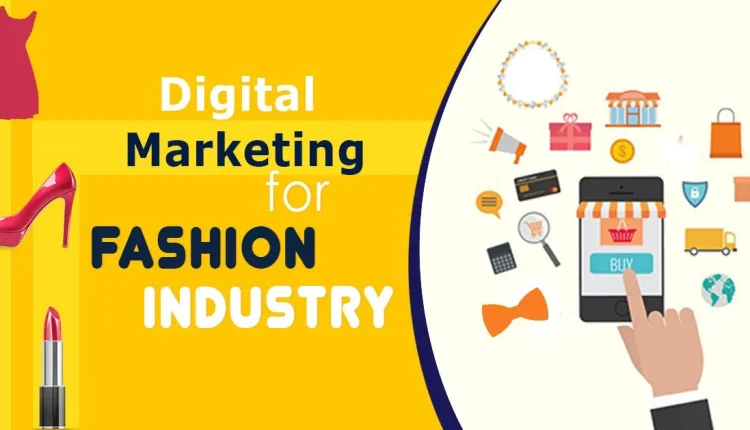Personal Fashion Business – Success in the fashion industry requires more than just a keen eye for design. It demands strategic planning, innovation, and adaptability. With fierce competition and rapidly changing trends, fashion entrepreneurs must employ effective strategies to stand out and thrive. Here, we explore the top 10 fashion business strategies that can help you achieve success in this dynamic industry.
Embrace Digital Transformation
Develop a Robust E-commerce Platform
In today’s digital age, a strong online presence is crucial. Invest in a user-friendly, visually appealing e-commerce platform that offers seamless navigation and a secure shopping experience. Optimize your website for mobile devices, as a significant portion of online shopping occurs on smartphones and tablets.
Utilize Social Media Marketing
Social media platforms like Instagram, TikTok, and Pinterest are powerful tools for fashion marketing. Create engaging content, run targeted ad campaigns, and collaborate with influencers to boost your brand’s visibility and reach a wider audience.
Focus on Sustainable Practices
Implement Eco-friendly Production Processes
Consumers are increasingly concerned about sustainability. Adopt eco-friendly production practices such as using organic materials, reducing waste, and minimizing carbon footprints. Highlight your commitment to sustainability in your marketing to attract eco-conscious customers.
Promote Ethical Fashion
Ensure that your production practices are ethical, treating workers fairly and providing safe working conditions. Transparency about your supply chain and labor practices can build trust and loyalty among consumers.
Understand Your Target Market
Conduct Market Research
Thorough market research is essential to understand your target audience’s preferences, behaviors, and needs. Use surveys, focus groups, and data analytics to gather valuable insights and tailor your products and marketing strategies accordingly.
Create Detailed Buyer Personas
Develop detailed buyer personas representing your ideal customers. These personas should include demographic information, purchasing behaviors, and pain points. This helps you create more targeted and effective marketing campaigns.
Other articles:
Innovate and Stay Ahead of Trends
Monitor Fashion Trends
Keep a close eye on emerging fashion trends by following industry publications, attending fashion shows, and analyzing social media. Staying ahead of trends allows you to quickly adapt your product offerings and maintain relevance in the market.
Foster Innovation and Creativity
Encourage a culture of innovation and creativity within your team. Experiment with new designs, materials, and technologies to differentiate your brand and captivate your audience.
Build Strong Brand Identity
Craft a Compelling Brand Story
Your brand story should reflect your values, vision, and the inspiration behind your designs. A compelling brand story resonates with customers on an emotional level and creates a strong connection.
Maintain Consistent Branding
Consistency in branding across all touchpoints—from your logo and website to packaging and social media—builds brand recognition and trust. Ensure that your brand’s visual identity and messaging are coherent and aligned with your values.
Offer Exceptional Customer Experience
Provide Excellent Customer Service
Outstanding customer service can set you apart from competitors. Train your team to handle inquiries, complaints, and returns professionally and promptly. A positive customer experience fosters loyalty and encourages repeat business.
Personalize the Shopping Experience
Use data analytics and AI to personalize the shopping experience for your customers. Personalized recommendations, tailored marketing messages, and exclusive offers can enhance customer satisfaction and increase sales.
Leverage Data and Analytics
Track Key Performance Indicators (KPIs)
Identify and track KPIs that are crucial to your business’s success, such as sales growth, customer acquisition cost, and inventory turnover. Regularly analyze this data to make informed decisions and optimize your strategies.
Use Customer Feedback
Collect and analyze customer feedback to understand their preferences and pain points. This valuable information can guide product development, improve customer service, and refine your marketing efforts.
Develop Strategic Partnerships
Collaborate with Influencers and Bloggers
Influencers and bloggers can significantly boost your brand’s visibility and credibility. Partner with those who align with your brand values and have a strong following within your target market.
Form Alliances with Other Brands
Form strategic alliances with complementary brands to expand your reach and offer added value to your customers. Joint marketing campaigns, co-branded products, and cross-promotions can enhance your brand’s appeal.
Other articles:
Optimize Supply Chain Management
Streamline Production Processes
Efficient supply chain management ensures timely production and delivery of your products. Streamline your production processes, maintain optimal inventory levels, and work closely with reliable suppliers to avoid delays and reduce costs.
Implement Technology Solutions
Leverage technology solutions such as inventory management software and supply chain analytics to optimize operations, improve accuracy, and enhance efficiency. These tools can help you manage stock levels, track orders, and forecast demand more effectively.
Invest in Continuous Learning and Development
Stay Updated with Industry Trends
The fashion industry is constantly evolving, and staying updated with the latest trends, technologies, and best practices is essential. Attend industry conferences, participate in webinars, and subscribe to fashion publications to keep your knowledge current.
Train and Develop Your Team
Invest in the continuous learning and development of your team. Provide training programs, workshops, and opportunities for professional growth to ensure your team stays motivated and skilled in their respective areas.
Conclusion: Paving the Path to Fashion Success
Success in the fashion industry requires a strategic approach, a keen understanding of market dynamics, and a commitment to innovation and sustainability. By embracing digital transformation, focusing on sustainability, understanding your target market, and continuously evolving, you can build a thriving fashion business. Implement these top 10 strategies to navigate the challenges of the fashion industry and pave the path to success.
FAQs
Q1: Why is a strong online presence crucial for a fashion business?
A strong online presence allows you to reach a wider audience, provide a convenient shopping experience, and engage with customers through various digital channels. It’s essential for brand visibility and sales growth.
Q2: How can I ensure my fashion brand is sustainable?
Adopt eco-friendly production processes, use sustainable materials, and ensure ethical labor practices. Transparency about your sustainability efforts can also build trust with eco-conscious consumers.
Q3: What role do influencers play in fashion marketing?
Influencers can significantly boost your brand’s visibility and credibility by promoting your products to their followers. Collaborations with influencers can drive traffic, increase sales, and enhance brand awareness.
Q4: How important is market research for a fashion business?
Market research is crucial for understanding consumer preferences, market trends, and the competitive landscape. It helps you make informed decisions, tailor your products, and create effective marketing strategies.
Q5: What are the benefits of strategic partnerships in the fashion industry?
Strategic partnerships can expand your reach, enhance your product offerings, and provide mutual benefits. Collaborations with complementary brands and influencers can increase brand exposure and attract new customers.




